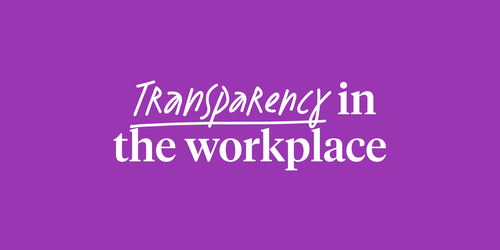
Article
Written by

Senior Content Marketing Manager, Culture Amp
People love a great headline, and a buzzword is a juicy way to contextualize changes in the world of work.
The latest buzzword? “Job hugging” – the act of clinging to your job for dear life.
Record-shattering numbers of employees left their jobs during “The Great Resignation,” but as of fall 2025, voluntary turnover has plummeted to its lowest point since before the COVID pandemic. The “quits” rate, which measures the number of people voluntarily leaving their jobs, is a key marker of worker confidence. It has fallen to 2% in recent months – the lowest sustained level since early 2016.
In this article, we take a closer look at job hugging. We explore what this buzzword indicates about the state of the workplace and what it means for HR and people leaders.
Job hugging describes a recent labor market dynamic in which employees increasingly prioritize job stability. Job-hugging employees choose to hold onto their current jobs instead of pursuing new opportunities or career advancement – regardless of how engaged they feel at the company.
This behavior is primarily attributed to employees’ feelings of fear and uncertainty about the current job market. You can think of job hugging as a form of “survival mode.” Imagine a rock climber clinging to the steep slope of a cliff, or a shipwrecked passenger clinging to their lifeboat on a turbulent sea – that’s the metaphorical equivalent of what many of today’s workers are going through.
Job hugging is almost the direct opposite of the more well-known act of job hopping, in which workers proactively (and sometimes rapidly) “hop” from job to job in pursuit of better opportunities.
In an employee’s market, job hopping is seen as an effective and efficient shortcut to advancing up the career ladder and increasing one’s salary. However, as we’ll explore in the next section, hopping jobs is no longer a viable (or attractive) practice in today’s economy.
In the U.S., the rise of job hugging has been attributed to several interconnected factors, including:
In summary, many U.S. employees find that holding on to their jobs is a smarter choice than gambling on a sluggish job market, given the current state of the economy and mounting technological anxiety.
It’s essential to note that this phenomenon isn’t unique to American workers. While the exact socioeconomic context may differ, a similar trend is occurring in other parts of the world. A quick Google Search reveals articles about how “job hugging has arrived” in countries such as the U.K., Australia, Singapore, and more.
For all intents and purposes, job security now seems to take precedence over job fulfillment – though this doesn’t mean that employees have stopped caring about finding purpose or a sense of belonging at work. They are simply shifting their priorities until the forecast improves.
From HR’s perspective, job hugging isn’t a good thing. While retention rates and commitment to staying will likely increase in the coming months, these are not the positive signals they would be in a healthy labor market.
As Culture Amp’s research on quiet quitting and recent labor market studies reveal, HR must look beyond headline retention numbers to understand what’s really happening beneath the surface.
Unlike in a healthy labor market, where employees stay because they’re motivated by meaningful work and feel committed to the company’s success, job hugging is predominantly an act of risk aversion.
Employees are motivated enough to stay, but potentially not enough to thrive. An employee who decides to stay for the “wrong” reasons might show up and do their job, but they’re not bringing the kind of enthusiasm, creativity, or discretionary effort that leads to innovation – or sustained high performance.
Heather Walker, Senior Data Journalist at Culture Amp, adds:
"We’re seeing what we’ve started to call a talent jam – when employees who would have otherwise left stay put, blocking the growth and mobility opportunities for those ready to move forward."
This surface-level stability poses further risks for organizations:
The overall effect? A workforce that appears stable while actually being stuck, potentially masking a critical absence of engagement and innovation and hampering growth and development.
Given these risks, HR leaders must prioritize, identify, and take action on hidden signs of disengagement and take proactive steps to re-engage their workforce. Consider the following:
The rise of job hugging signals a workforce that may look stable on the surface but is actually at risk of widespread disengagement and stalled growth. Employees are holding onto their jobs out of caution – not commitment – and as a result, organizations will find themselves facing hidden costs like lost productivity, underutilized skills, and a lack of innovation.
This environment demands more than passive retention; it requires intentional action to truly re-engage, develop, and connect teams – so they’re no longer just hugging their jobs, but loving them.

Learn how Culture Amp can help.